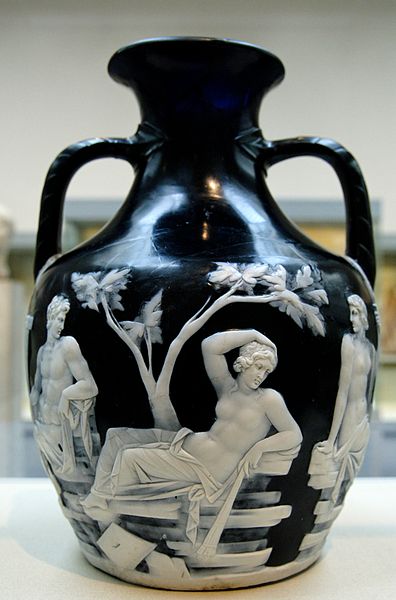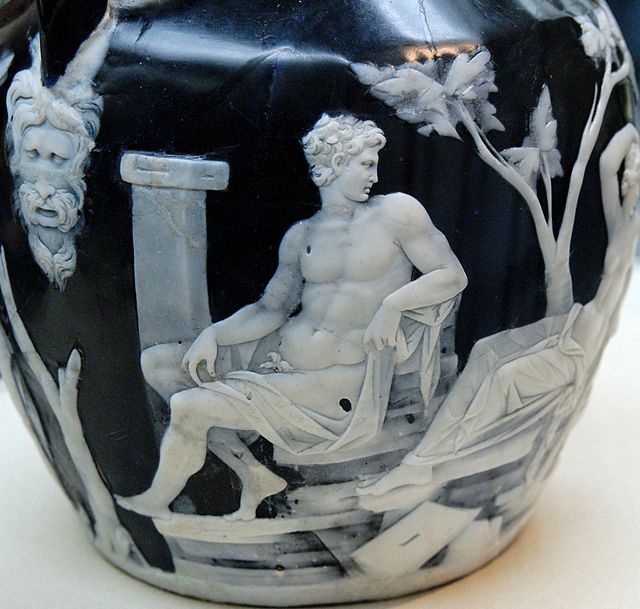The Portland Vase is a Roman cameo glass vase, which is dated to between AD 1 and AD 25, though low BC dates have some scholarly support. It is the best known piece of Roman cameo glass and has served as an inspiration to many glass and porcelain makers from about the beginning of the 18th century onwards. It is first recorded in Rome in 1600–1601, and since 1810 has been in the British Museum in London, although until 1945 it was on loan from the Dukes of Portland. It was bought by the museum in 1945 and is normally on display in Room 70.
Image: Portland Vase BM Gem 4036 n 1
Image: Portland Vase BM Gem 4036 n 5
Scene 2
Detail, with the figure who might be Octavian
Roman glass objects have been recovered across the Roman Empire in domestic, industrial and funerary contexts. Glass was used primarily for the production of vessels, although mosaic tiles and window glass were also produced. Roman glass production developed from Hellenistic technical traditions, initially concentrating on the production of intensely coloured cast glass vessels.
Cage cup from Cologne, dated to the mid-4th century. Collection Staatliche Antikensammlung, Munich
This pyxis is exemplary of luxury Roman glassware, c. late 1st century BC. Walters Art Museum, Baltimore
Roman glass from the 2nd century
Enamelled glass depicting a gladiator, found at Begram, Afghanistan, which was once part of the Greco-Bactrian Kingdom, but was ruled by the Kushan Empire during the contemporaneous Roman Principate period, to which the glass belongs, 52–125 AD (although there is some scholarly debate about the precise dating).








